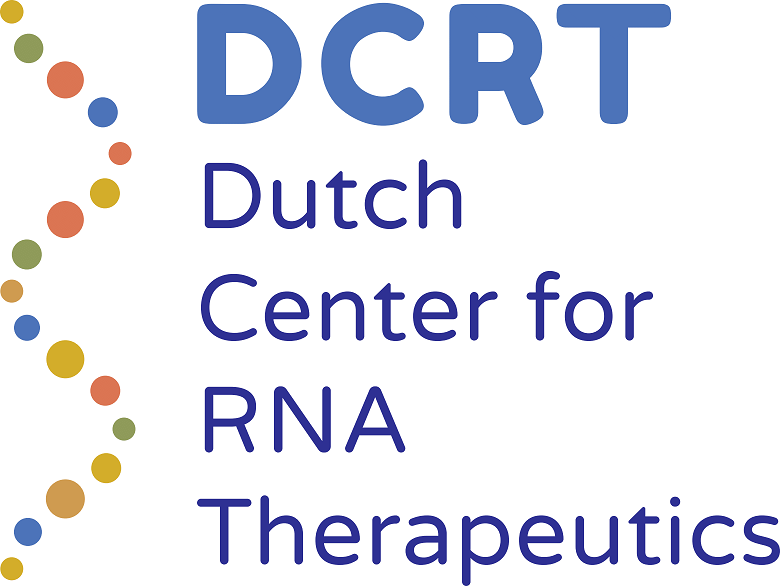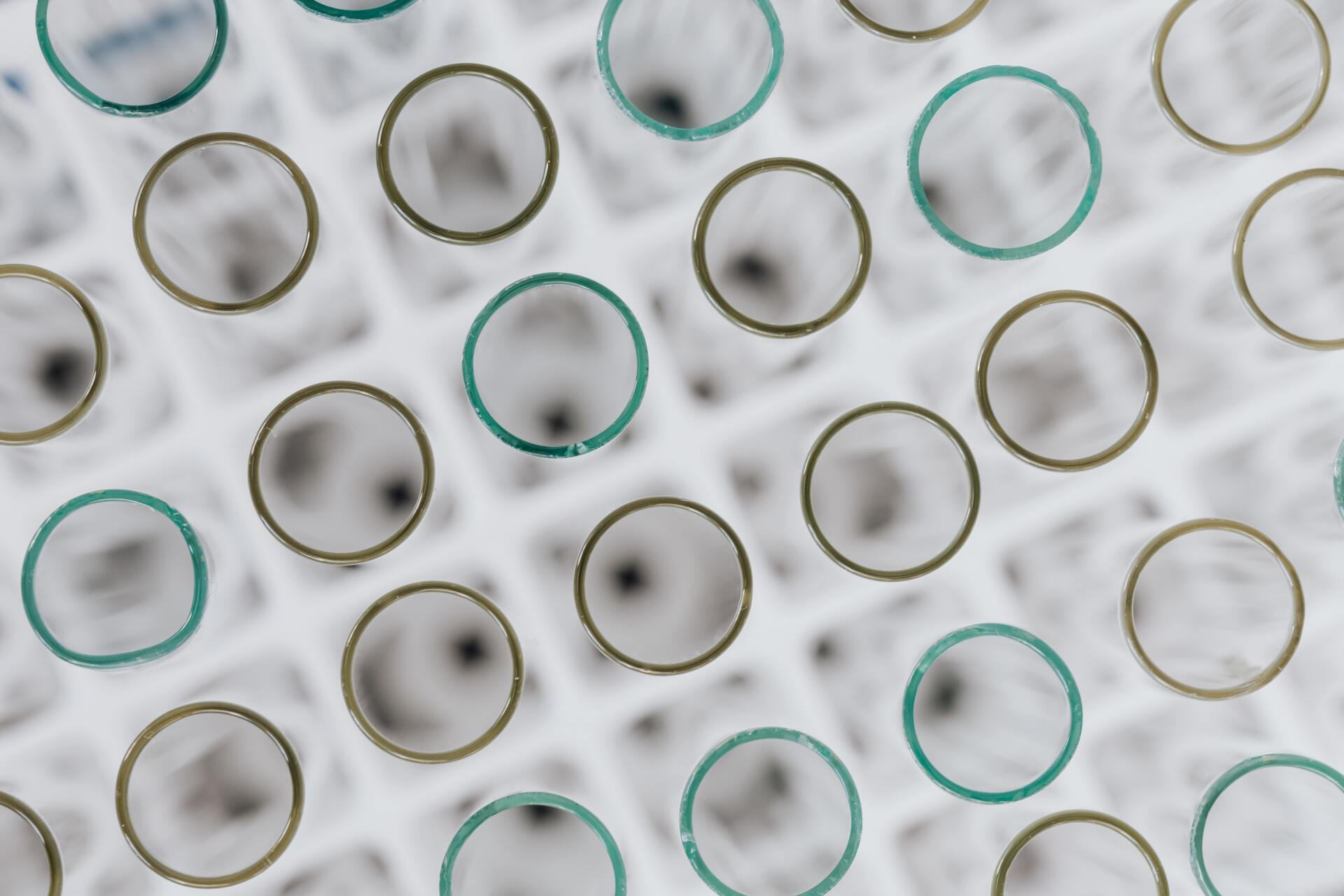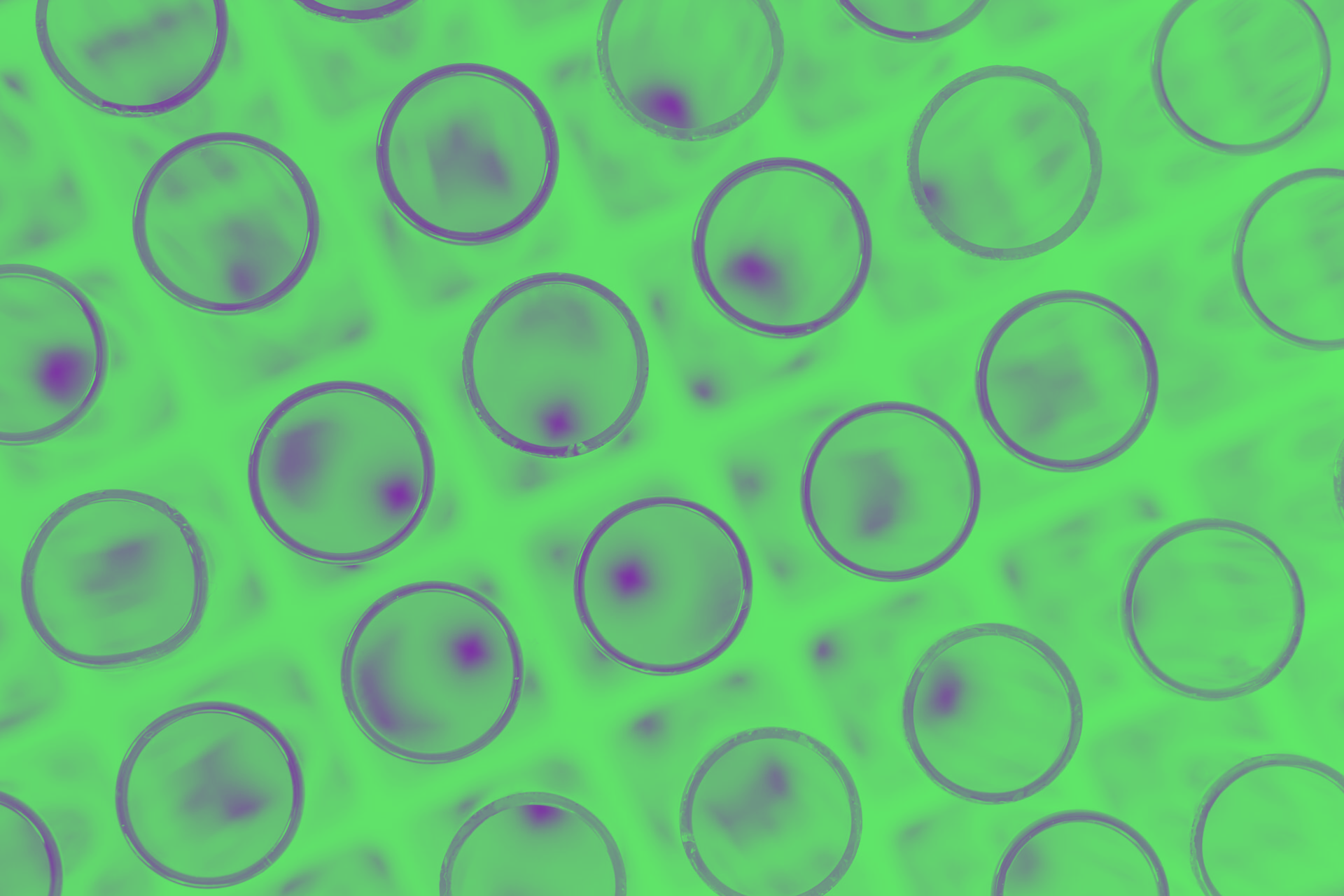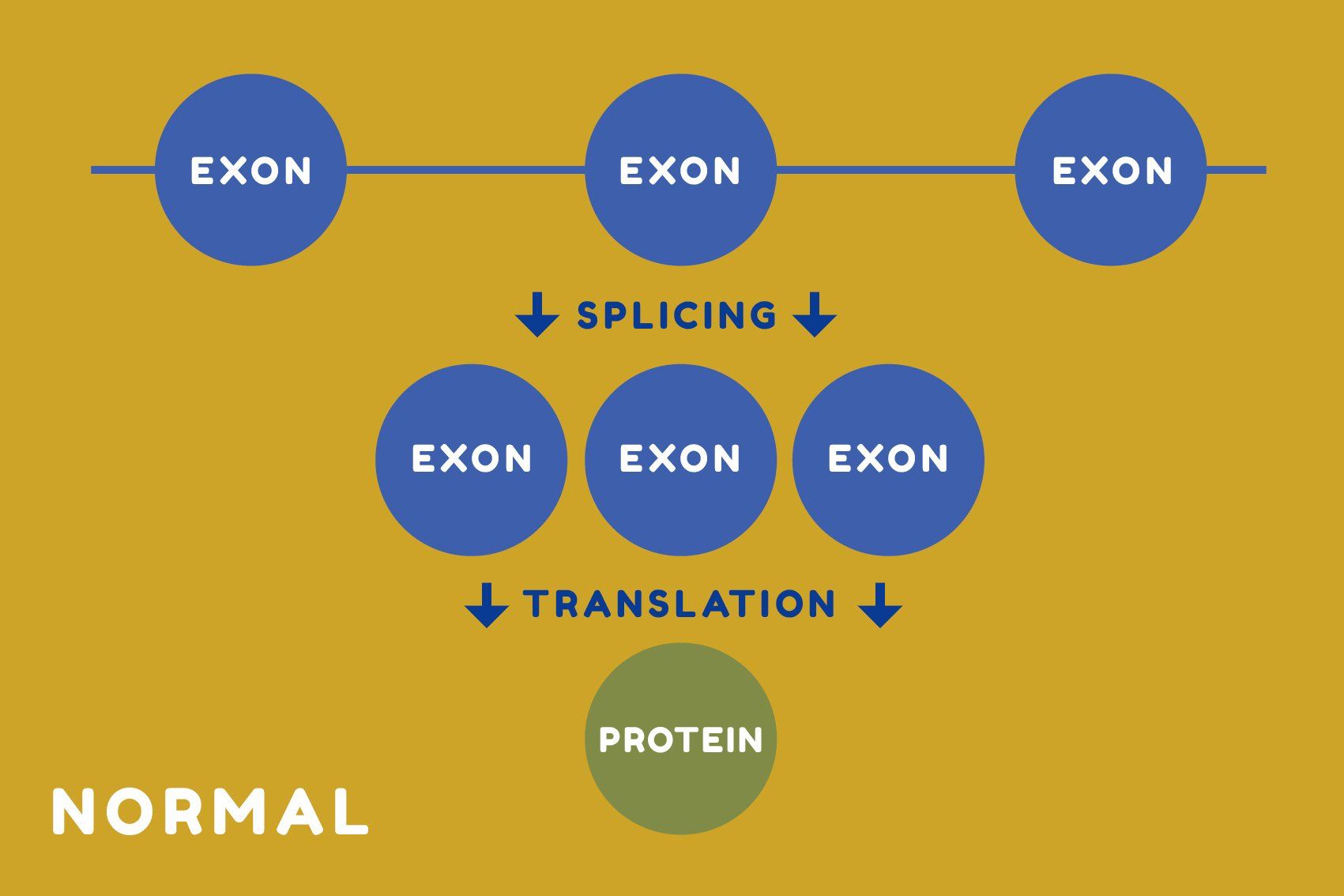Exon Skipping
At this point the DCRT focuses on splice modulation for patients with unique, eligible mutations. This is achieved with antisense oligonucleotides, small stretches of chemically modified RNA. In exon skipping, pre-mRNA splicing is modulated such that an exon is skipped.
This can be exploited in different ways to have therapeutic effects.
Mutations
RNA therapy
Most hereditary diseases are caused by errors in the DNA, resulting in no proteins or harmful proteins. RNA therapy uses so-called antisense oligonucleotides (ASOs) to restore protein production or to reduce the amount of harmful protein. This does not reverse any damage that has already occurred, but it does slow down the progress of the disease. "At the LUMC, we have more than twenty years of experience in designing and testing ASOs. We see it as a task for academic centers to make this treatment available for this specific patient group", says professor of Translational Genetics Annemieke Aartsma-Rus. She is one of the initiators of DCRT. "Research has also been carried out with ASOs in Nijmegen for more than ten years, including in the field of hereditary eye
disorders and Usher syndrome, with promising results," says Rob Collin, research leader in the Genetics Department of Radboudumc. ‘After the successful treatment of the motorneuron disease SMA with Spinraza, the door has also been set wide open for treatment of neurological disorders’ according to Ype Elgersma, professor in Molecular Neuroscience, and director of the ENCORE expertise center for neurodevelopmental disorders at Erasmus MC. The lab of Ype Elgersma has been closely involved in developing an ASO treatment for Angelman syndrome, a rare and severe neurodevelopmental disorder. Currently, trials are underway to establish the safety and efficacy of this treatment.
How can ASO therapy help?
Our genes contain the code for our body to make proteins that we need to function. This genetic code is dispersed in genes over exons (illustration 1 below). When a gene has an error, this leads to problems, because the protein it codes for can no longer be produced. In rare cases the error causes a part of the gene to suddenly become recognized as an exon (technical term “cryptic splicing mutation”, illustration 2 below).
This will make the code unreadable, causing loss of a protein, which in turn will result in symptoms depending on the function of this protein. ASOs (antisense oligonucleotides) can hide these ‘fake exons’, so they are no longer recognized and the normal protein can be produced (see illustration 3 below).
Milasen
The group of Tim Yu showed already that it is possible to develop an ASO specific for a unique mutation. This ASO is called milasen, named after Mila, the patient treated with this ASO. Their paper can be found here:
OTS briefing
DCRT works in alignment with the N-of-1+ taskforce of the oligonucleotide therapeutics society. They have provided a briefing document on the development of individualized ASOs.






